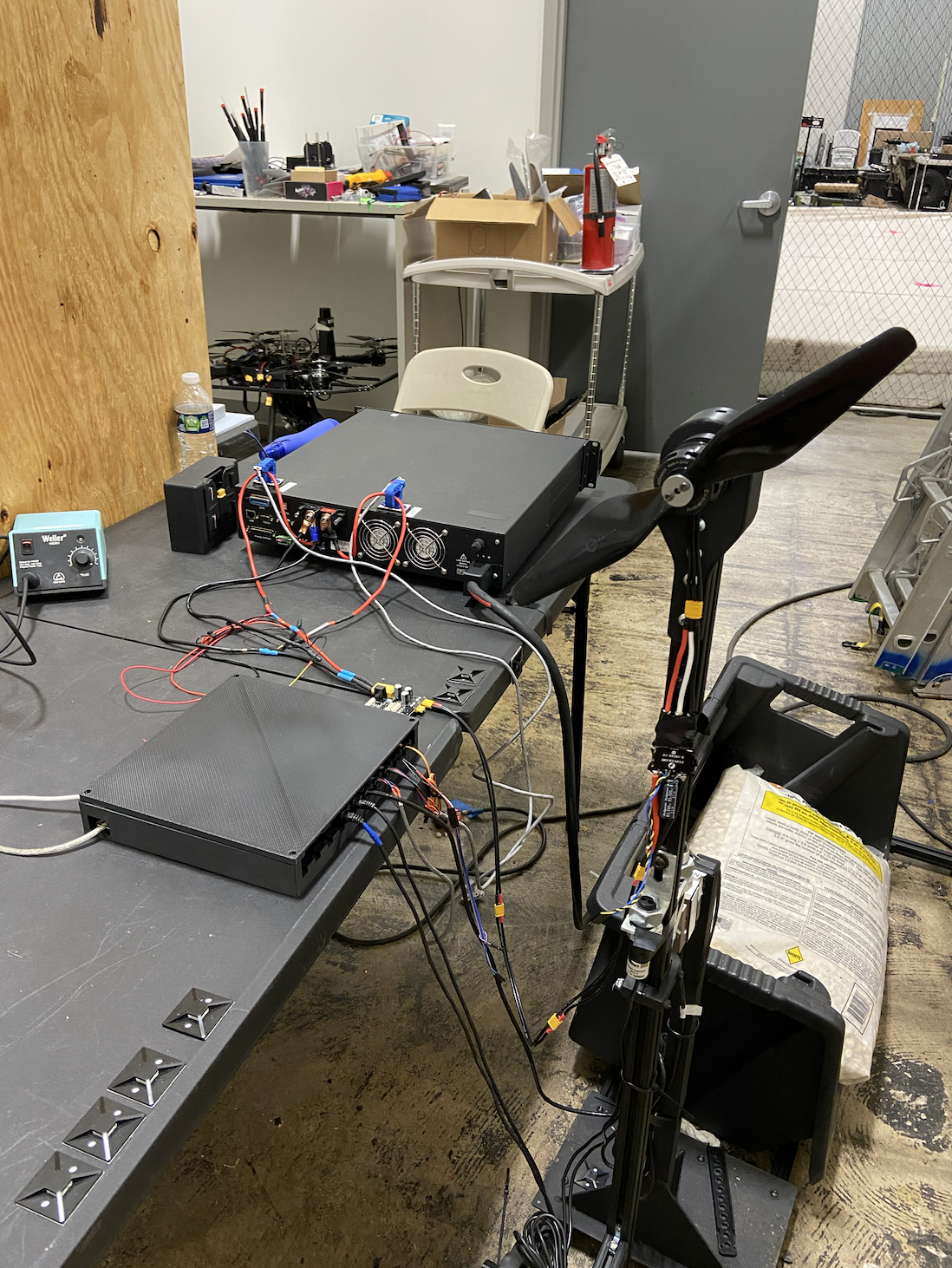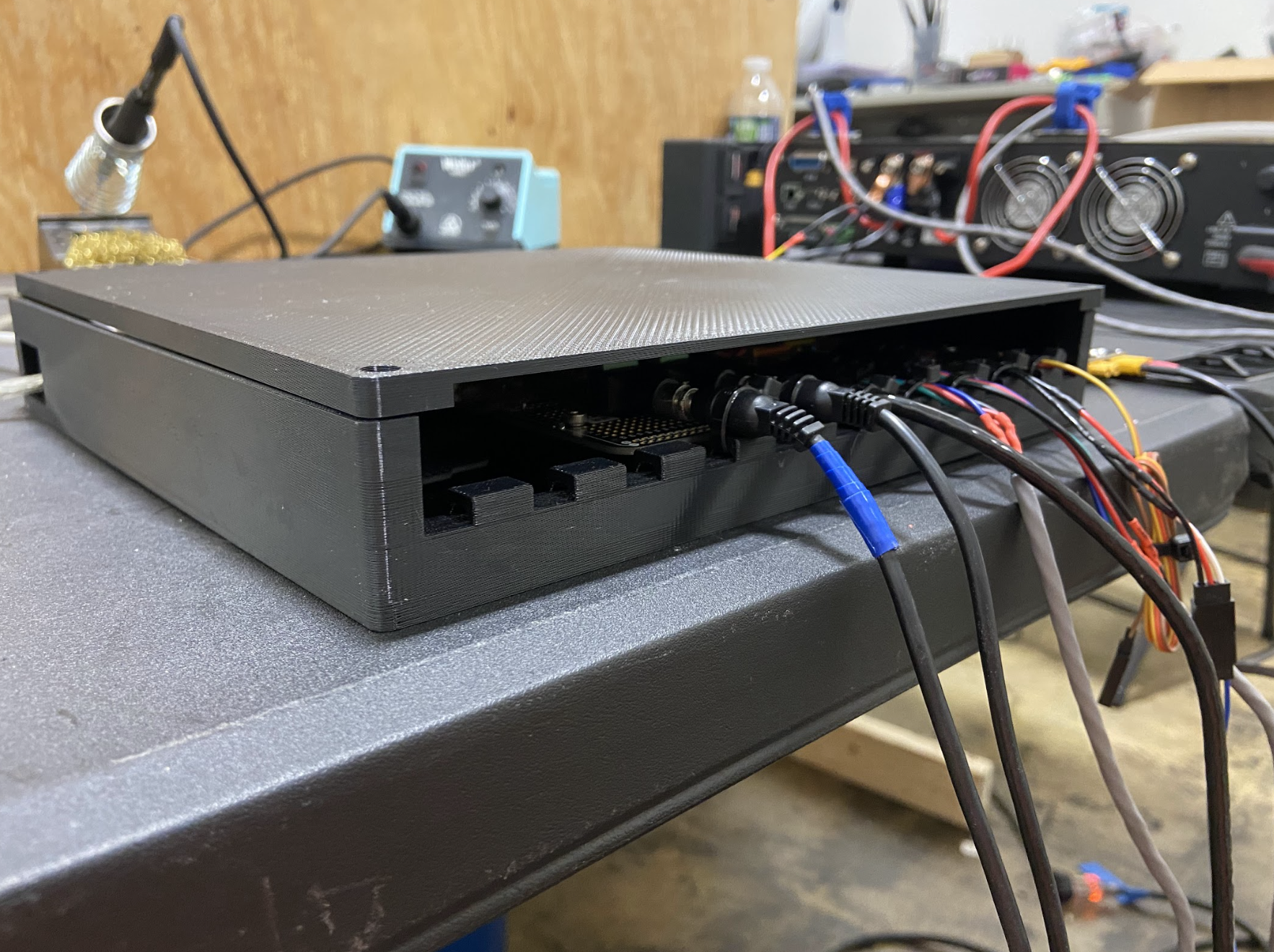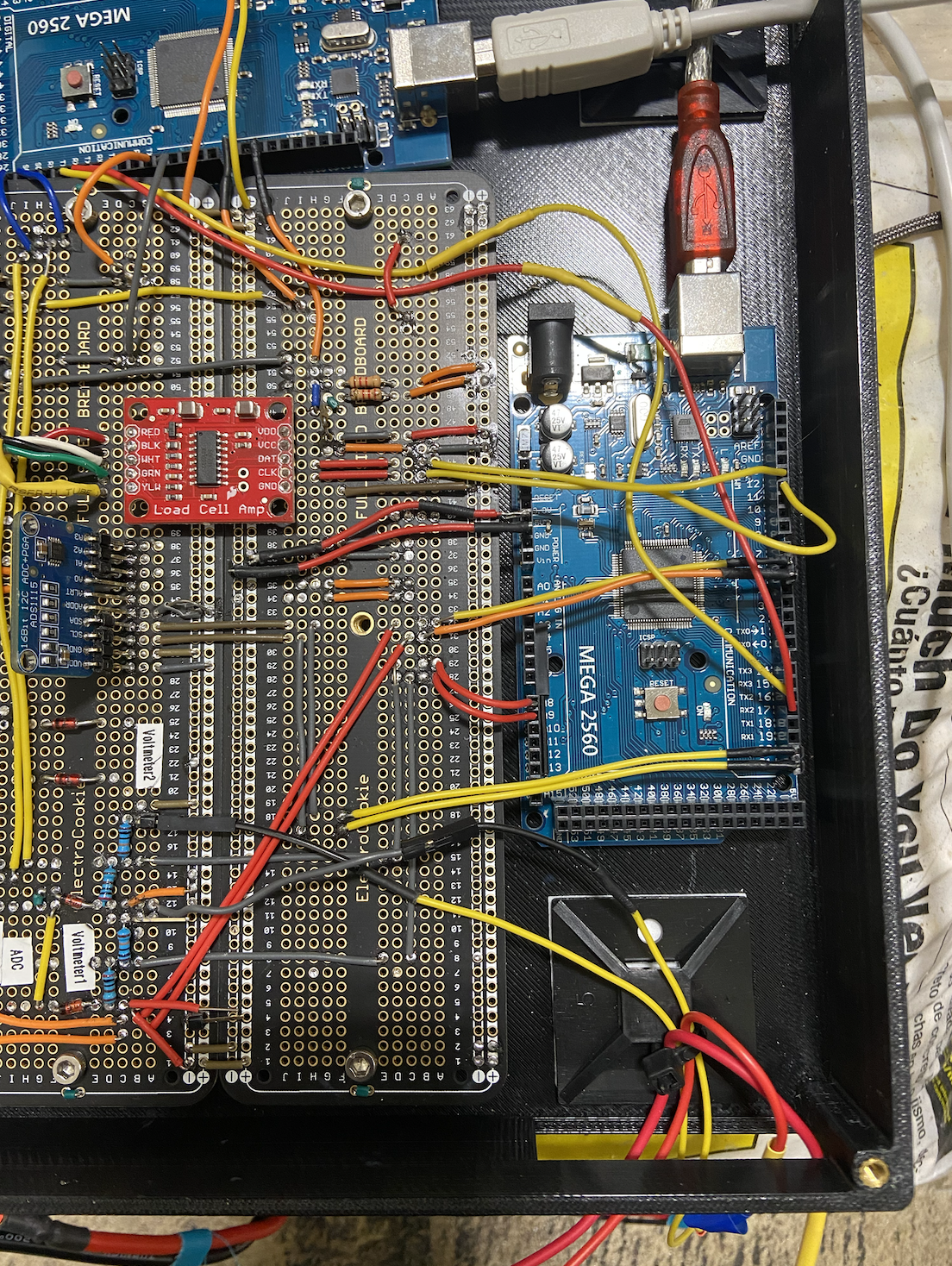Robotic Research Inc.
From August 2021 to August 2022 I was a mechanical and electrical engineer at Robotic Research Inc. a vehicle automation company.
During my employment at Robotic Research, I worked on two main projects.
(1) Drone Propellor Testing Environment
(2) Device for Automated Control of Trailer Brake
This project tested my knowledge in a large variety of fields. Assembling all the electrical components of this project prompted me to learn how to read data sheets, how to troubleshoot electrical issues, and calibrate sensors for accuracy. I also learned how to draw electrical diagrams and began the process of transferring the diagram into Altium for custom PCB design in the future.
To facilitate user experience and cleanliness of the entire product, I worked on the design for an enclosure of the entire product. The enclosure had to consider constant changes with equipment that would be attached to the boards, as well as cooling of the circuit board when running long tests. This required 3D modeling skills and knowledge much of which was done on Autodesk Inventor for this project.
Overall, I had a lot of fun working on this project. I learned a significant amount about electronics and electrical engineering in general. It also was my first project that I had to design for other people to use in the long term, which required a lot of design thinking to successfully pass this project to someone completely new.
Testing GUI
Automated Pneumatic Air Brake Control Device
A device that can automate the process of releasing and engaging trailer brakes wirelessly.
Hardware 3D Printed Enclosure
Drone Testing Stand
A complete data collection and measurement tool for testing brushless motors, ESCs, and propellors.
Description
This testing stand consisted of two voltmeters, two ammeters, two ESC controllers, one tachometer, one load cell, and two Arduinos.
Various brushless motors and ESCs could be attached to the system and would be powered by an external power supply. Thrust, power input, direction, and current supplied could all be adjusted through a customized GUI.
After a test is run, a compiled Excel spreadsheet would be exported to the computer with all organized data from the test stand.
This test stand would go on to be used as the main data collection instrument for decision-making on various brushless motors and ESCs even after my leave at the company. This was a 3 month long project.
Prototype Wiring Diagram
Prototype Breadboard Setup
Description:
When transporting cargo for groceries, shipment facilities, etc. there are two systems involved. One is the trailer. This is the "shipment container” which will carry the cargo needed. The second is the “vehicle” which is the “remote control” for the trailer. It has a pin system that will connect to the trailer and move the cargo around. Currently, a huge bottleneck is connecting the air system from the vehicle to the trailer for controlling the brakes. The air system is connected from the vehicle to the trailer through gladhands. A connection that requires dexterity and strength the connect. The current solution is to use a robotic hand to extend, position, and twist the gladhands in place. This method has proved to be inefficient, expensive, and over-engineered. My solution is to create a device with a built-in air compressor that can be controlled remotely by the vehicle.
This device had to meet a number of standards. As a one-time installation for this device, it has to be weather resistant, self-charging, light, and easy to install. It also must be able to read pressure settings and consistently feed information back and forth.
Unfortunately, due to the confidentiality of this project, I cannot share the technical details of the device. However, this project tested my knowledge in many areas of engineering. Including 3D design, pressure line systems, hardware engineering, data acquisition, GD&T, and technical documentation.




